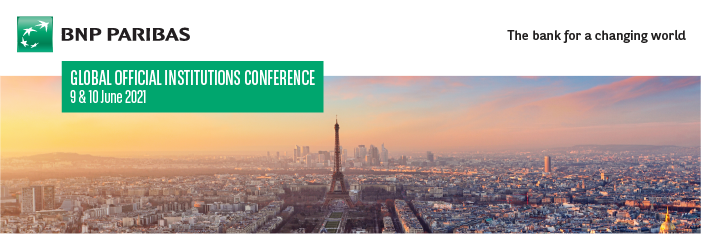
Speaking at the recent BNP Paribas 2021 Global Official Institutions Conference, and ahead of the Bank for International Settlement’s (BIS) Annual Economic Report 2021 which was published 29 June, Augustín Carstens, General Manager of the BIS, said the global economy has rebounded strongly after Covid-19, but the recovery is uneven and incomplete.
Global economies may be in a much better shape today than they were 12 months ago, “the recovery is uneven and incomplete,” Carstens said, adding: “It could hardly be otherwise given that the pandemic is far from over. Indeed, rather than a single global recovery, it is better to think of three distinct recoveries being under way.”

Indeed, rather than a single global recovery, it is better to think of three distinct recoveries being under way.
Augustín Carstens, General Manager, BIS
China and the US, whose economies are already expanding, will lead the recovery, followed by Europe where economies are expected to rebound in the second half of 2021, then in third place are emerging market economies where “progress varies by country and region, but the overall story is much less positive.”
Carstens warns that emerging market regulators have very little room to maneuver – these countries have suffered most from multiple waves of the virus outbreaks. Moreover, they will likely suffer the most from other economies recovering as this will drive commodities and food prices up, resulting in a negative impact on the value of their currencies. Against this backdrop, any positive stimulus from monetary policy will be limited.
Supply chain disruptions will have a long lasting impact on global economies and the entire ecosystem may need to rethink or reinvent itself into a sustainable post-Covid ecosystem.
“Over the past few months, signs of cost pressures and supply bottlenecks have become ever more apparent. These have shown up in rising commodity prices, longer delivery times and soaring freight costs. In some jurisdictions, there have been reports of labour shortages and tentative evidence of faster wage growth, albeit from very low levels,” Carstens noted.
He cautioned, however that “In my view, it is too soon to conclude that the global economy is set for a sustained period of high inflation, rather than a temporary overshoot of central bank targets.” Adding: “The bigger risk is that even a modest and temporary overshoot of central bank targets could be disruptive if financial markets overreact. If markets come to expect that higher inflation will persist, bond yields could rise and financial conditions tighten.”
Whatever the challenges that the global economy faces at present, it is in a much better place than seemed likely a year ago. The prospects for a solid recovery over the medium term are good.
Augustín Carstens, General Manager, BIS
The driving forces in the recovery need to shift from policy stimulus and consumption to business investment in order to have a real, sustained recovery, Carstens explained. “And, to avoid the economic malaise that followed the GFC, the recovery needs to be accompanied by a sustained rise in productivity growth.”
However, “the real consequences of the pandemic have not been addressed,” he said. The pandemic has introduced changes that are here to stay, such as remote working, online shopping or a reduction in travel, both professional and leisure. These changes mean that the various industries need to change, with resources shifting to the new post-pandemic economies. The next phase of recovery must come from businesses investments and reshuffling rather than policy stimulus and consumption, as has been the case so far.
Carstens noted: “These structural changes will be smoother and less disruptive if businesses are in a position to adjust to the changes in pandemic-induced demand patterns. This brings me to my second concern: that many businesses are in poor financial shape.” Levels of indebtedness are already high, leaving little room for investments or efficient productivity, therefore putting a limit to a sustained recovery.
Carstens ended “on a positive note. Whatever the challenges that the global economy faces at present, it is in a much better place than seemed likely a year ago. The prospects for a solid recovery over the medium term are good.”
Global economies need to ensure “that the recovery is built on a solid foundation of business investment and productivity growth, not just stimulus and consumption,” he concluded.
Click here for the full speech of Augustín Carstens.